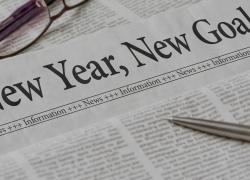What is LinkedIn in a nutshell?
By category, LinkedIn is a social, or more accurately, relationship network.
It also happens to be the most popular professional social media platform in existence and the absolute best network for B2B companies to be on.
When we look at the success of social media marketing efforts on different platforms, LinkedIn is a clear winner: a tremendous 80% of marketing leads from social media come from LinkedIn alone, with the second-highest amount coming from Twitter at only 12%.
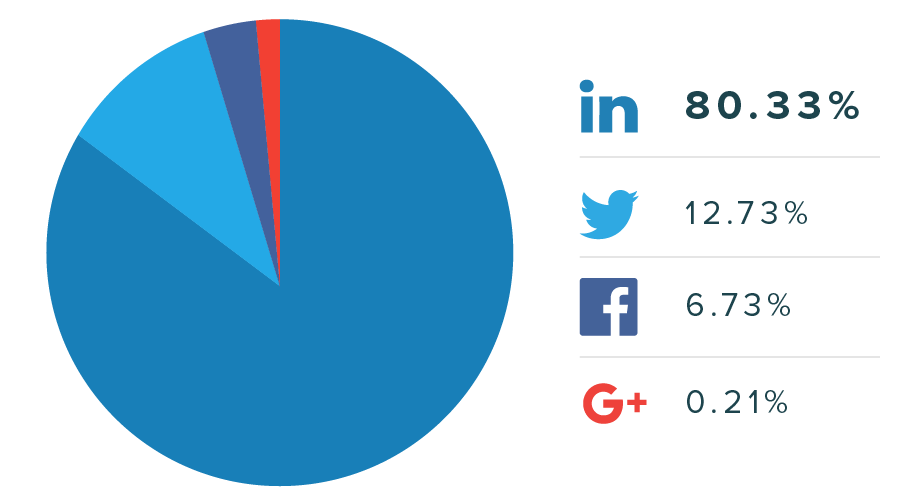
Top that off with the fact that on average 64% of social media traffic to your company website comes from LinkedIn and it’s not hard to see why this network is so valuable.
No wonder 92% of B2B marketers leverage LinkedIn over all other social platforms; it just works.
So, who’s over there on this B2B powerhouse network, anyway?
Of the 500 million members, 106 million are monthly active users, and 40% of the total users are on the platform daily.
Users from the U.S. total in 133 million, which is the largest amount by country—great news for American-based B2B companies.
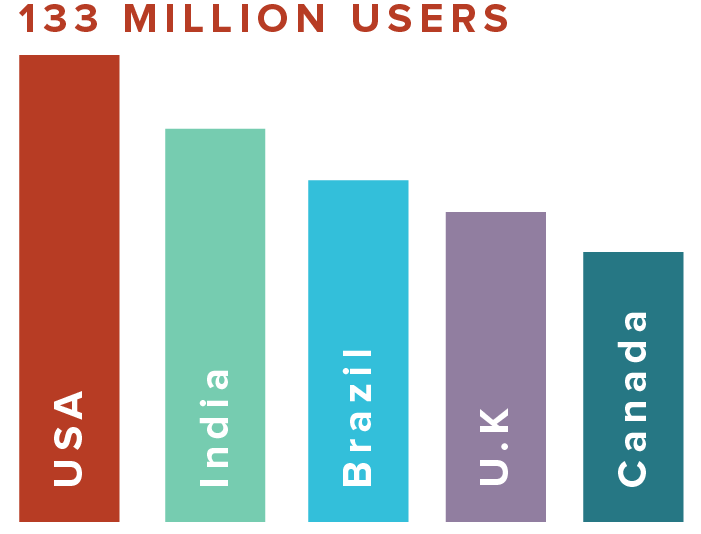
There’s a lot of activity buzzing about on there, too, with an average of 200 conversations happening every minute in LinkedIn Groups, making it a good place to interact with potential customers.
One key reason why LinkedIn is just so good for B2B compared to B2C is that all of the crucial purchasers hang out on there: the platform has 61 million senior-level influencers, 40 million decision makers, and a solid 41% of millionaires join in on the fun, too.
The fact that LinkedIn allows you to select the industry you work in as part of your account’s identifying information makes it easier for brands to find people in their niche, which means less time is spent seeking out quality connections.
And while the average user spends only 17 minutes on the site monthly, users are less likely to use other social networks alongside LinkedIn; therefore, the die-hard fans will be more highly engaged on the site.
Besides, it’s a good connecting point for B2B sales, as 50% of members are more likely to purchase from companies that engage with them on LinkedIn.
These numbers are all great and enticing, but getting to that level of success is easier said than done.
You have to jump into the middle of the action if you want to truly harness the power of LinkedIn.

WAYS TO ENGAGE ON LINKEDIN
Content Sharing
So you have a website, your website has a blog, and that blog has articles that are begging to be shared. LinkedIn provides a great opportunity to share that awesome content in order to entice people to go visit your website. Keep in mind that the culture of LinkedIn is all about professional content that’s written to impress, so naturally, the most popular content is educational or informative. Some topics, like religion or politics, have no place on the platform—keep it neutral and focus on fulfilling your potential customer’s needs, not aimlessly entertaining or spreading opinions. Users like to read about anything that helps them grow professionally, stay on top of trends, or learn new skills; they also like to skim through tips or best practices on a topic. More than half of the network’s members are reported to be interested in industry insights, but some sources say that inspirational and to-the-point content is favorable too—especially if you can write specifically between 600 and 800 words on the topic.
If you want to spice it up, you can stray away from the standard article format, too, and provide handy whitepapers, case studies, webinar offers, or anything else that sparks the right people’s attention. Keep some of these engagement statistics in mind when striving for getting the most out of every article:
- Links in posts drive 200% more engagement.
- Images receive a 98% higher comment rate.
- Videos linked from YouTube result in a 75% higher share rate.
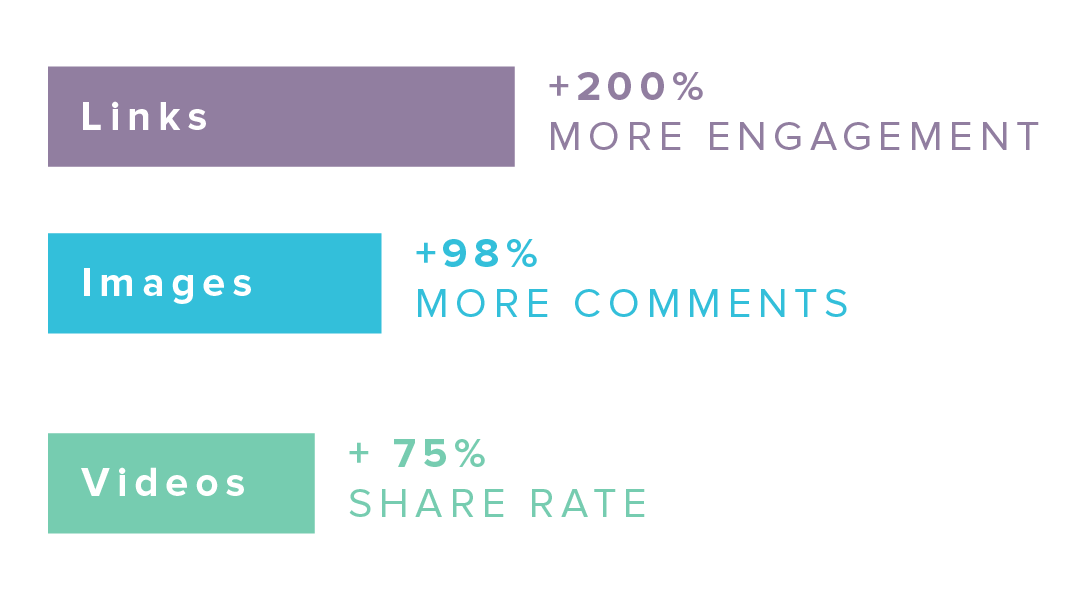
Depending on your goal, you can make your content accordingly. The ultimate goal of driving social traffic to your website, however, can be achieved by using any of these as a stepping stone so long as it leads people to some sort of call to action (CTA) that encourages users to step on over to your website as an end point.
LinkedIn Pulse
Ever since LinkedIn launched its own publishing platform called LinkedIn Pulse, it’s been added to the list of necessities for marketers using the network. With more than 1 million publishers and over 150,000 posts published every week, it’s a valuable tool for your business—especially if you don’t already have a company blog on your website.
If you do have a blog, however, LinkedIn Pulse is extremely useful as well, as you can easily syndicate the content from your blog to potentially double your reach. For best traffic results, I suggest publishing part of your article on LinkedIn with a “continue reading” link that sends readers directly to the full article on your website. Another trick that comes in handy is going cross-network: when you publish a shiny, new article on LinkedIn Pulse, hop over to Twitter and share the news there. You’ll get more engagement when 2 of your networks are notified of new content.
LinkedIn SlideShare
Creating SlideShare presentations of your content is a great way to extend its reach and lifetime, especially since this content hub is targeted toward professional users who are specifically seeking information. Essentially a more visually appealing extension of LinkedIn’s platform, SlideShare comes with added benefits to repurposing your brand’s content in a more exciting format. Not only is it great for SEO, with some brands—like Eloqua—getting more traffic from SlideShare than YouTube and Google+ combined, but it also has a great reputation. Users view it as a neutral ground in terms of content discovery, so publishing presentations on this channel comes with a guaranteed level of trust and credibility. It’s great for both branding and educational purposes for B2B businesses—and branded educational purposes—because the platform supports branded channels, where your company can collect all of its content into one neat place. Experiment with different content formats beyond traditional presentations to capture viewers’ attention, such as PDFs, videos, mini conferences, and so much more.
With only 16 million registered users and easy access from LinkedIn, SlideShare is also ideal for helping your brand stand out much more than on, say, Twitter or Facebook, where millions of content types flood the channel every minute. Finally, this platform has its own analytics to help you identify what type of content fares well with your audience...and what doesn’t. Overall, SlideShare is optimal for driving more LinkedIn followers to your content, especially when you include a CTA at the end of the presentation to entice now-educated viewers to check out what your brand has to offer.
LinkedIn Groups
Groups are a great place to join in on the conversation and flex your expertise. 80% of users belong to at least 1 group on LinkedIn, and considering that there are 1.5 million groups on the platform, there are a lot of opportunities to get involved—50 opportunities, actually, as that’s the limit on how many groups you can join at a time. There are groups for every industry, niche, job function, or level, so your goal is to join the ones where your target market is most active for best results.
As a brand in this day and age, your job is to help people. Groups are the perfect place to do that in exchange for profile views and, ultimately, link clicks, but you have to follow the rules. That’s not just an idiom here—make sure you review the rules for each group that you join so that you can make the most of it. There are a couple rules that tend to transcend all groups: never self-promote (you’re there to help, not sell), and introduce yourself just like you would at a live networking event. Not only is it an opportunity to share with your target market what it is that you do, but you also won’t be that creepy, mysterious person in the group that others are unfamiliar with.
Many groups already have a huge audience and some key players who dominate the playing field, but that’s okay—if you’re not being heard in one group, you can always blaze your own trail and start a new group about whatever you want...so long as it’s relevant to your marketing and business objectives. It can be a little scary to start from scratch, so grow an audience by inviting your social followers from LinkedIn and beyond (Twitter, Facebook, etc.) as well as your email list.
Creating your own group gives you a few engagement and traffic opportunities, as people who join your group will automatically receive emails from LinkedIn about new content or activity in the group. The likelihood of people clicking through to your site increases as your brand shows up in their LinkedIn notifications and their email, and getting more people in front of your content is always a good move. You can also link to your blog in the group, adding another means for group members to go check out your business in more depth.
One important thing to note is that you can’t simply create a group and pop in once in a while to plop in an article, then leave for another indefinite period of time. It’s your group, so you need to be active in it. If you physically can’t meet that requirement, there is another way: appoint a moderator who will actively (and regularly) participate and keep the energy and zeal of the group alive.
Interact with Influencers
As with all social media platforms, LinkedIn has a handful of influencers—kind of like the popular kids of the network whose thoughts and content are highly trusted. Interacting with these social superstars can rub off well on your business’s engagement, so give it a try and comment on a very popular post of an influencer in your niche—just make sure that you have something intelligent and insightful to add to the conversation. That way, you can expose your brand to a larger audience—the influencer’s audience—and further your organic reach on the platform. If people like what you say, the ideal outcome is that they’ll go take a look at what you’re doing and potentially visit your website.
Another way to leverage influencers’ gigantic following is by including them in your blog content, then giving them a shoutout on LinkedIn. That way, you’re not just using the influencer’s, well, influence free of charge; they also get their name on some great content in exchange for your brand’s expanded reach.
Leveraging LinkedIn’s Features
I mentioned before that LinkedIn has descriptive identifiers of its users, so it’s easier than ever to search for your ideal customers with the platform’s internal search capabilities. Some demographics that you can sort leads by, on the organic side of the platform, are:
- Job function
- Country
- Region
- Seniority
- Industry
- Company size
You can determine the ideal specs, then identify the decision-makers that fall under the right categories and compile a list of the best prospects to contact. Kudos to LinkedIn for providing a free tool for efficiently extracting the highest-quality leads!
If you want to take this data a step further, you can go into your LinkedIn business page’s analytics, then click on visitors, and finally, filter by category. This will determine whether your strategy is targeting the right people so that you can reach your ideal audience without wasting time and energy.
Remember that LinkedIn is sort of like your business’s modern-day contact book, so take full advantage by searching for connections beyond just leads. Even if someone isn’t ready to purchase what you’re offering, it’s still a great, organic way to network and market to a wider audience. The more connections you have, the further the organic reach will go on your company updates.
Another perk of LinkedIn is the increased capabilities of the platform’s paid account option—though you don’t have to be the one with a paid account to leverage this little trick. Since LinkedIn notifies people whenever someone views their profile, and only paid accounts can access the viewer’s identity, take advantage of this opportunity: click onto the profiles of people you’d like to work or connect with on the platform, and you will come up on their radar. It’s free exposure, complete with a handy, attention-grabbing notification. If you’re lucky and approach this trick the right way, you could score a new client; at the very least, the user may be more inclined to connect or engage in some way because your brand showed interest first.
Optimizing Your LinkedIn Efforts
You obviously can’t just throw ideas at the proverbial wall and hope they stick, so let’s cover the essential elements that you should optimize on LinkedIn to make the most of this wonderful B2B platform.
Your Company Page
Creating a company page helps your brand’s search engine optimization (SEO), as business pages on LinkedIn are crawled by search engines and help your brand presence. This increases your likelihood of being found organically in search results, which is another great way for your prospects to access your website. There’s a great trick for this: have employees link their personal profiles to the company page to provide search engine bots with a better “map” of who works where and how it all fits together. Posting links to your business website via sharing content, portfolio items, company news, and more will also help show the search engines that your page is active and relevant.
Unfortunately, it’s not enough to just set up a company page and let it do its magic: take the time to tell the story of your company’s history, mission, what you do, and what makes you special in the “about us” section. You can include a link to your website, whether it’s your blog, portfolio, about us, or even contact form—whatever makes the most sense contextually.
Include a logo, of course, so that page visitors know they’re on your brand’s page.
Then use the summary section to incite action; it’s ideal for links. Attach your best blog posts, ebooks, and other digital media (like videos) to give visitors some content to browse through. The summary section is ideal for ramping up more exposure than the publications or projects sections since it’s located at the top of the page and is hard to miss.
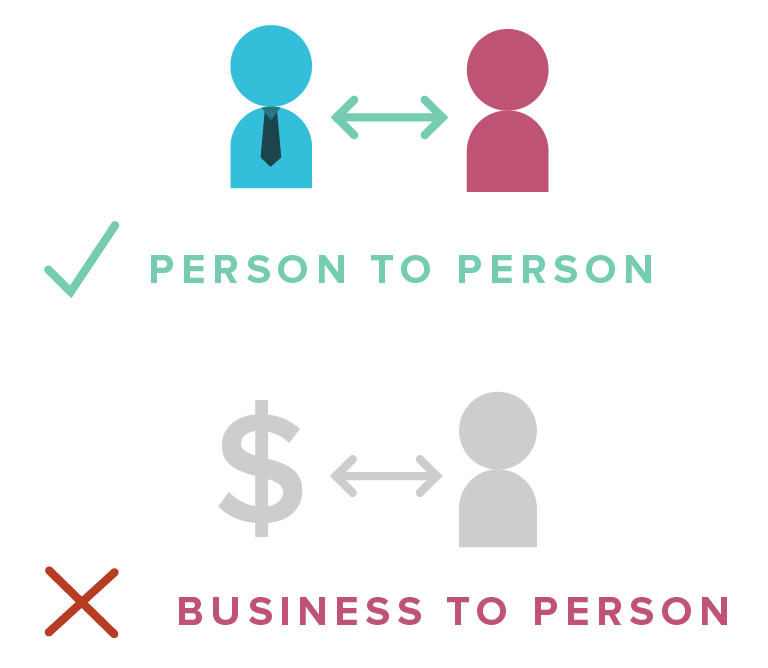 Though it may be counterintuitive for some, it’s actually very helpful to have the CEO or other decision-makers in your company complete and optimize their profile, including linking to the company one to create the association.
Though it may be counterintuitive for some, it’s actually very helpful to have the CEO or other decision-makers in your company complete and optimize their profile, including linking to the company one to create the association.
This is because it’s much easier to connect person-to-person than brand-to-person; people tend to prefer a real human with a face to enhance the authenticity of the interaction. Let one or a couple of your brand’s big wigs become the personal extension of your brand to amplify reach and networking capabilities.
Post Frequency and Best Times
There have been ample studies on scientifically analyzing the absolute best time and frequency of posting to get the best engagement, but keep in mind that there is no true, comprehensive formula. However, we’re going to cover the major findings anyway, as they provide a good starting point for your posting strategy—just remember to frequently test, analyze, and update as you go.
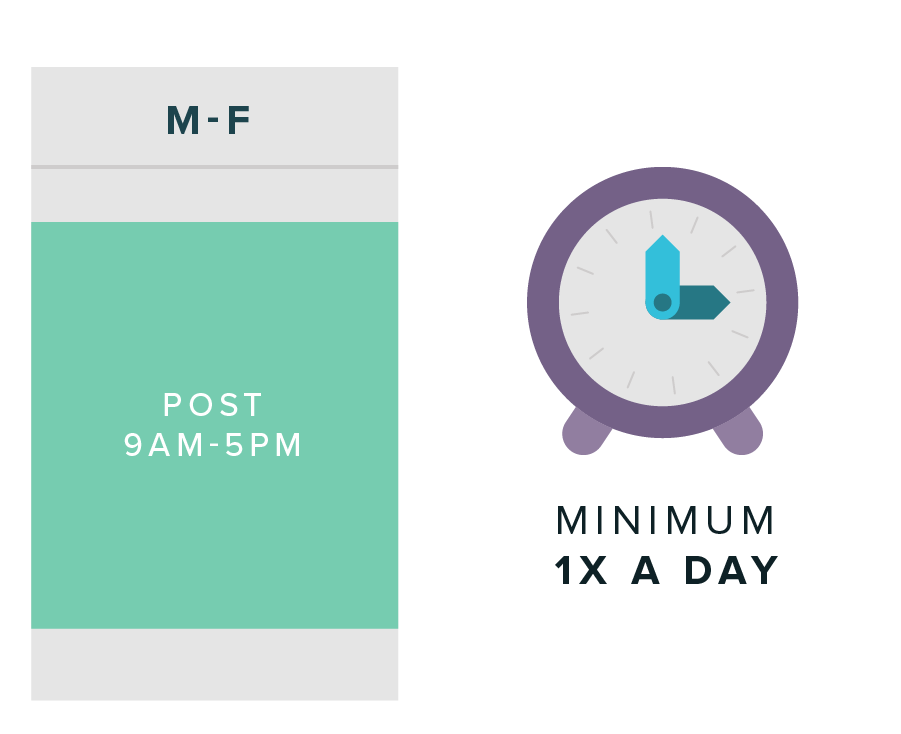
The data says that you should post once per day at most, though LinkedIn itself advises that you post as many status updates as your content supports, and best-in-class marketers tend to post 3 to 4 updates per day.The verdict? If you have quality content that’s worth sharing, do it. If you don’t, don’t. Content-wise, try to curate or reshare a post every other day and share your own content in between for best results.
While some studies claim that the best time tends to be around 10 to 11 in the morning, it ultimately depends on your audience. Tuesday through Thursday are cited as having the highest engagement, especially around noon and 5pm and not the morning. With contradicting advice from equally credible sources, I recommend that you run your own tests to determine your brand’s unique optimal times to post.
As a general rule of thumb, since LinkedIn is a goldmine for B2B connections, stick to the typical workman’s (and workwoman’s) 9 to 5 on weekdays for starters. Try to generally avoid weekends: engagement is typically reported as devastatingly low, likely because people are taking time off of their busy work week while they can and would rather not be reminded of their job during that time.
Image Sizes
LinkedIn only supports so many forms of content, but it’s quite finicky with image formatting—too wide and it’ll cut off the top, bottom, or both; too tall and it’ll fill the sides in with an ugly gray color. Don’t let your pretty images get distorted; follow these size guidelines:
Image display size: 1200px by 627px
Thumbnail size: 180px by 110px
Logo image: 30px by 300px
Cover image: 1192px by 220px
LinkedIn Pulse Publishing Tips
Before your pour your heart and superb work ethic into LinkedIn Pulse, take a step back. Make sure your content is ideal for converting by writing within the easy-to-read or standard reading level to engage the most people possible. Also try to create a neutral sentiment rather than a negative or positive one: surprisingly, neutral content outperforms positive (this isn’t Facebook, where cute puppy videos reign supreme) by getting more comments and views per post.
The main point of LinkedIn Pulse is to communicate an idea through mostly text. While links can be added where appropriate—for instance, when referencing another relevant source or in a CTA at the bottom of your article—do not use video or multimedia in your published content. Save all that fancy styling for your actual company blog, or the place where impressions are paramount.
Ironically, images are great to use, so the moral of the story is: don’t use motion-filled multimedia, but still strive to break up lengthy text with supplemental visuals. Based on studies, using 8 images is best, and the first image fares well at the very beginning of the article. Rhink of it like a banner image...but not officially.
Let’s touch on content length, as it varies per platform and purpose. LinkedIn users gravitate toward good, standard, medium-length articles of 1,900 to 2,000 words. On the internal side, Pulse tends to feature 1,000-word articles or shorter, which puts us in a bit of a conundrum: do we appeal to users to get organic engagement higher, or Pulse to get our content in front of more audiences? Both are important, so experiment with different lengths to find success. Headline-wise, users like cold, hard facts: the best headlines start with “How to…” or a number of list items on a topic (i.e. 10 Things to Know Before You Launch a Campaign). To get the most views possible, keep the title within 40 to 49 characters—my example above happens to be 46. Finally, don’t use questions. Just don’t. There’s a place for them (like Facebook), and LinkedIn isn’t it.
There are two major actions you can take to rescue underperforming content on LinkedIn Pulse, too. First, to avoid letting a great article go to waste, you can take your request to Twitter by composing a tweet: explain why your article should be featured and add “tip @ LinkedInPulse” to get the platform’s attention and a chance at being featured. It works for some, but there are obviously limits on how many articles can get featured, so only try this with your very best content.
Second, there is no duplicate content punishment on LinkedIn like there is on your business’s website, so take an underperforming post and simply republish it. Make sure to update the image and title first, as those may be the factors that caused the article to fail the first time around.
So far, I’ve shared a lot of tips for driving organic traffic to your company website through LinkedIn, but it doesn’t have to stop at that. Let’s take a look at the not-so-free options as well.
ADVERTISING ON LINKEDIN
Sometimes, there are just so many brands competing for the spotlight that sponsoring your content is the only realistic way to go, and that’s okay.
LinkedIn is by far the best social media site for B2B advertising. There are so many ways to target people through ads, including job title, job function, seniority in company, company name, industry, gender and age, company size, geography, group membership, skill, and even degree.
Furthermore, the network provides conversion tracking from ads, so you don’t have to blindly hope for the best with each campaign or venture out of the network and manually connect everything to Google Analytics.
The types of ads that LinkedIn offers are pretty simple, especially compared to other social media sites. This can be an advantage as there are fewer formats and purposes to get oriented with; however, it can be a disadvantage if you want as much customizability as possible. The three types of ads on LinkedIn are:
1. Sponsored (or boosted) updates
As the name implies, you take an existing update from your LinkedIn page and pay (boost it) to expose it to new audiences. This format is basically limited to native ads displayed in the feed. It works, though, as one company
(NewsCred) saw a $17 return on investment (ROI) for every $1 spent— not too shabby!
2. Sponsored InMail
This automated direct messaging option that’s available for the sales side allows you to send personalized content to your target audience through the platform’s messenger feature. It’s much easier to engage someone in a one-on one message than through an ad due to the heightened sense of authenticity that comes with each individually-crafted direct message.
3. Text Ads
This is LinkedIn’s self-service pay-per-click (PPC) platform, where you can fine-tune targeting options and set your own budget. These ads display with an image and CTA on the right side of users’ feeds and when clicking into a profile; they also have a simple version in text-only form on the very top of the feed. Text ads are the most common form of advertising on LinkedIn.
FINAL THOUGHTS
LinkedIn is such a powerful tool for B2B companies that you simply cannot pass on it—it would likely mean passing on a ton of quality leads. Now that you know how to maximize its potential for driving traffic, focus on delivering the best possible experience to your followers by helping them with industry-specific or educational content, expertise, and being in the right place at the right time.




